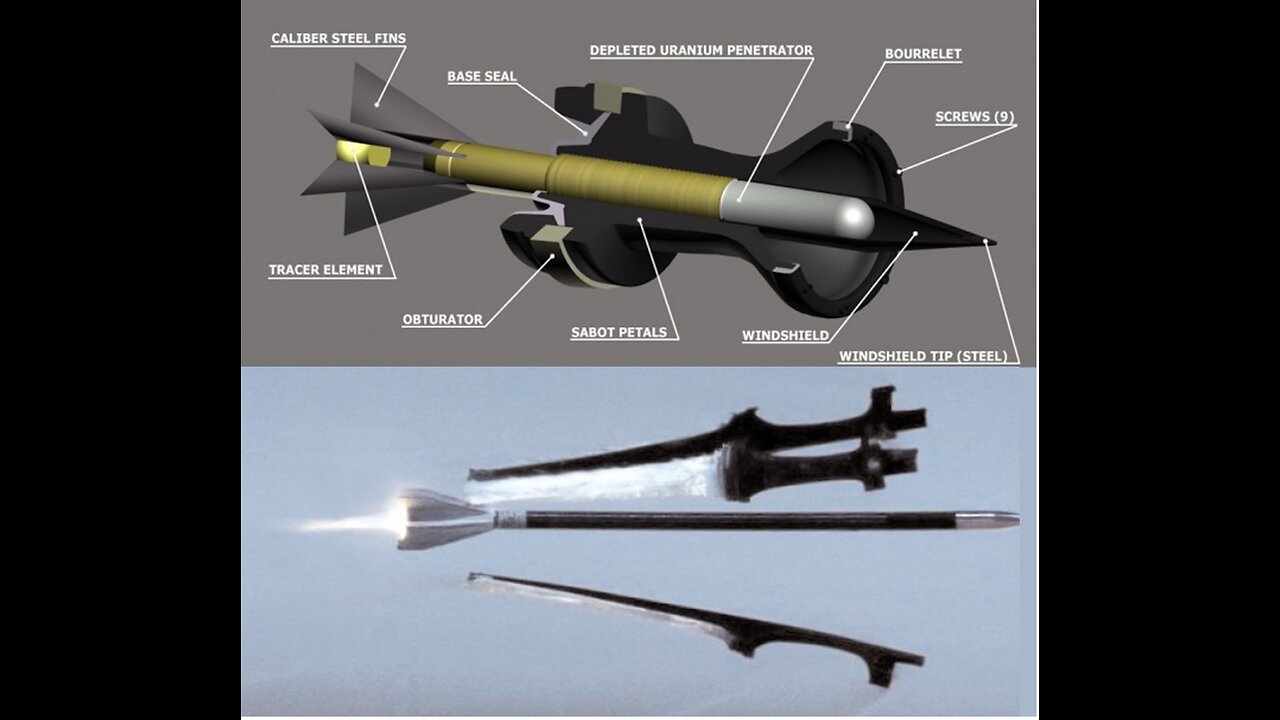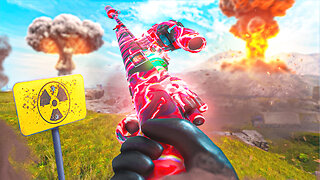Premium Only Content

Depleted Uranium Ammunition. What it is, how it works, health and environmental consiquences.
In March, 2023
the British government announced that it will send depleted uranium ammunition to Ukraine in a move that is sure to draw fire from critics of the controversial weapon.
Russian leaders quickly denounced the move as escalatory. “If all this happens, Russia will have to respond accordingly, given that the West collectively is already beginning to use weapons with a nuclear component,” warned Russian President Vladimir Putin.
First deployed on a large scale during the Gulf War, the U.S. military used depleted uranium for tank armor and some bullets due to its high density, helping it to penetrate enemy armored vehicles.
Depleted uranium is a by-product of the Uranium enrichment process where the ratio of natural uranium isotopes from the earth’s crust is ‘enriched’ with higher energy uranium isotopes to produce uranium suitable for use in nuclear reactors. The uranium remaining, is "depleted" of about 40 percent of its radioactivity, but retains the same chemical toxicity as natural uranium.
Due to its extreme density depleted uranium is used as armor plating. It is also used in Penetrator kinetic energy munitions, for its mass and pyrophoric properties under conditions of extreme temperature and pressure.
782,414 depleted uranium rounds were fired during the 1991 war in Iraq, mostly by US forces. In a three-week period of conflict in Iraq during 2003, it was estimated that between 1,000 and 2,000 tonnes of depleted uranium munitions were used. More than 300,000 depleted uranium rounds were fired during the 2003 war, the vast majority by US troops.
Officials have confirmed that the U.S. military, despite vowing not to use depleted uranium weapons on the battlefield in Iraq and Syria, fired thousands of rounds of the munitions during two high-profile raids on oil trucks in Islamic State-controlled Syria in late 2015. The air assaults mark the first confirmed use of this armament since the 2003 Iraq invasion, when it was used hundreds of thousands of times
The taller of the two (below, left) is 25 millimetres round fired by the "Bushmaster" canon on the Army's Bradley Fighting Vehicle.
When fired, the segmented plastic cap and sabot fall away leaving the penetrator, a pencil-sized rod of uranium (along with stabilizing fins) as the only projectile. The threaded bottom portion of the depleted uranium rod is used to attach the fins.
The 30 millimeters round with the red cap is employed by the U.S. Air Force's A-10 (aka the "Warthog.") Fired by the plane’s GAU-8 canon at a rate of up to 4,800 rounds per minute, its primary function is to destroy enemy tanks.
Uranium metal’s high density provides the penetrator with momentum and a straight trajectory, something almost impossible to stop. Tungsten, which has a similar density to uranium, can also be used but depleted uranium has greater target penetration.
Unlike tungsten, uranium is pyrophoric. It also has a lower melting point than tungsten. As a depleted uranium penetrator strikes a target, its surface temperature increases dramatically. This causes localized softening in what are known as "adiabatic shear bands" and a sloughing off of portions of the projectile's surface. This keeps the tip sharp and prevents the mushrooming effect that occurs with tungsten.
When the depleted uranium penetrates the target vehicle, the larger fragments tend to chew up whatever is inside while the pyrophoricity of the uranium increases the likelihood that the vehicle's fuel and/or ammunition will explode. The technical term used to describe these events is "behind-the-target effectiveness."
Some versions of the Army's M1A1 tank fire large 120mm depleted uranium rounds. Until recently, the Navy’s Phalanx system employed small 20 millimeters depleted uranium rounds to shoot down incoming missiles. The current version of the Phalanx system employs tungsten rounds rather than depleted uranium.
The potential for health effects from internal exposure is related to the amount of depleted uranium that enters a person’s body. Inhaled depleted uranium particles are likely cleared from the lungs over several years.
Depleted uranium fragments may remain for many years. Older studies in uranium manufacturing workers show high exposures to uranium may especially affect the kidneys.
Doctors in Iraq are recording a sharp rise in the number of cancer victims south of Baghdad.
Locals blame depleted uranium from US military equipment used in the 2003 invasion. Some 500 cases of cancer were diagnosed in 2004 alone. That figure rose to almost 1,000 two years later.
In 2008, the number of cases increased sevenfold to 7,000 diagnoses. and the number is rising.
-
 LIVE
LIVE
The State of Freedom
6 hours ago#325 Running an America-First Campaign w/ Sammy Wyatt
133 watching -
 1:50:16
1:50:16
Dear America
3 hours agoTrump Calls Putin MID-MEETING With World Leaders!! Did Trump just END THE WAR?!
83.4K54 -
 LIVE
LIVE
GritsGG
3 hours agoWin Streaking! Most Wins 3390+ 🧠
135 watching -
 2:03:23
2:03:23
Matt Kohrs
11 hours agoLIVE! Day Trading Futures & Options || Market Open
25.6K1 -

Wendy Bell Radio
7 hours agoThe Ultimate Alpha
55.1K36 -
 LIVE
LIVE
Reidboyy
3 hours ago $0.25 earnedNEW FREE FPS OUT ON CONSOLE TODAY! (Delta Force = BF6 Jr.)
22 watching -
 LIVE
LIVE
RoxomTV
19 days agoMAX KAISER & STACY HERBERT LIVE — Bitcoin Reborn | 24/7 from RoxomTV
63 watching -
 2:07:52
2:07:52
Badlands Media
2 hours agoBadlands Daily: August 19
24.6K12 -
 LIVE
LIVE
EXPBLESS
4 hours agoMessing Around In Elden Ring Finding All Caves And Hidden Secrets.
45 watching -
 1:05:31
1:05:31
The Mike Schwartz Show
3 hours agoTHE MIKE SCHWARTZ SHOW with DR. MICHAEL J SCHWARTZ 08-19-2025
17.8K1